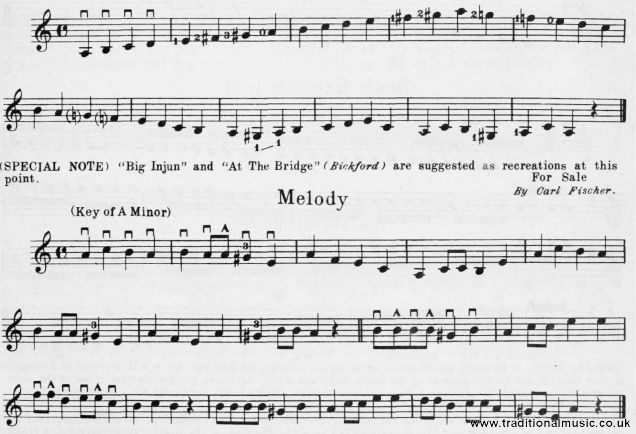Mandolin Self Instructor, online tutorial - Page 27
A simplified self learning system for the Mandolin with tuning instruction, song folio, chord diagrams, sheet music and PDF for printing. By ZARH MYRON BICKFORD
| Share page | Visit Us On FB |
|
Keys and Scales (continued) 87
Each major scale has its relative minor scale-that is, one which is related in a harmonic sense
and also in the matter of appearance or"family looks" Thus it will be seen that the scale of A minor looks like the scale of C,except that it starts on A.
In order to bring" about the succession of steps and half steps in this scale, as previously g-iven, Jt is necessary to make use of sharps for two of the tones in ascending, these being- brought back to their natural position by the cancels in descending-. When used during- the course of a scale or other com- position, these signs are called ACCIDENTALS. The Harmonic minor scale is the same both as- cending and descending-. Accidentals are effective only in the measure in which they occur, with a single exception which
will be noted later. The fourth measure of the following- scale is an example of the effect of the cancel, while the same character before the F in the following- measure is used as a reminder, rather than because it is necessary. The sharped G's in the "Melody" must be carefully noted and played one fret higher than 6 (natural). It is also to be noted that sharped notes are always played with the same finger as the regular note. The low G#, made at the first fret on the G string-, is of course an excep - tion to this rule. |
||
|
Scale of A Minor
(Relative of C Major) |
||
 |
||